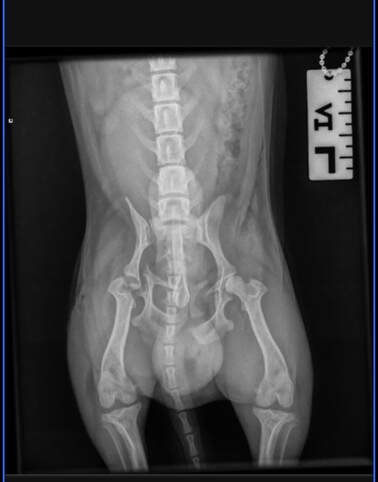|
The first time I ever heard about FHO surgery I was shocked to learn of the high success rates for doggo patients who have made the decision to undertake this somewhat radical approach to solving an all too common problem. As a hydrotherapist, planning a recovery program for a dog who has recently completed FHO surgery at first appeared daunting but when you have amazing patients and doggo owners who follow the plan step-by-step, what once appeared as daunting suddenly becomes one of the most rewarding rehabilitation cycles of my career. In this blog, we will dive into FHO surgery, what it entails and the plan towards a successful recovery using both hydrotherapy and physiotherapy as the main focal points on the journey to success.
What is FHO? Canine femoral head and neck excision (FHO) surgery is a procedure that addresses hip joint issues in dogs, providing relief and improved mobility. FHO is commonly performed to alleviate pain and discomfort associated with hip dysplasia, fractures, arthritis, or other conditions affecting the hip joint. It involves the removal of the femoral head and neck, allowing the formation of a "false joint" with surrounding muscles and tissues. During FHO surgery, the surgery removes the femoral head (the ball part of the ball-and-socket joint) and sometimes the neck of the femur. This eliminates the bone-on-bone contact that causes pain, and the body adapts by forming a pseudo-joint, utilising surrounding muscles for stability. The Road to Recovery Every journey starts out best with a proper plan or road map in place so that all parties involved are aware of the recovery process and what steps to take next to ensure the best recovery and rehabilitation possible. After FHO surgery, dogs will need rest and restricted activity. Pain medications and the beginning of some rehabilitation therapy will also be prescribed to manage discomfort and aid in the recovery process. Controlled exercise is crucial during the recovery phase. Short, on-leash/guided walks can help prevent muscle atrophy and promote joint mobility. Avoiding activities that place excessive strain on the hind legs, such as running or jumping is of the most importance at this early stage. Most Vets will ask patients to seek a physiotherapist post-surgery to aid and assist in the recovery process. Joint mobilisation exercises, massage and the use of laser therapy will all go a long way to promote strength and flexibility to aid in the recovery process as this is also a crucial time to be aware of potential complications that could quickly derail the road to recovery. These complications, such as infection or persistent lameness, need to be addressed as soon as they are noted and the safest option if there is ever any doubt would be to return to the vet for further review. As each patient progresses in recovery, the vet may gradually allow increased activity. However, it's essential to remain cautious and avoid pushing your dog too quickly, ensuring a steady and safe return to normal activities. This is the perfect time to add hydrotherapy to your recovery plan to not only continue in aiding the road to recovery but to also help build and manage muscles in the hind limbs and lower back. Hydrotherapy Case Study
If you want to learn more tricks and tips and be involved in a community of like minded individuals, join our facebook group at:
|
AuthorJoanna Whitehead Archives
June 2024
Categories
All
|



 RSS Feed
RSS Feed
